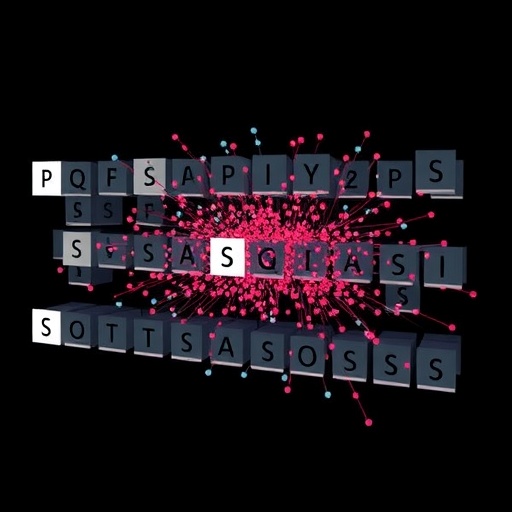In recent years, the field of condensed matter physics has been profoundly shaped by the intriguing behaviors of quantum strongly correlated systems. Since the landmark discovery of the Mott insulator-metal phase transition, these systems have captivated researchers due to their rich phenomenology and potential technological implications. A central challenge in this domain lies in the precise characterization of correlation functions that dictate the emergent properties of many-body quantum systems. Unfortunately, traditional perturbative methods falter in these regimes because the strong entanglement and interactions defy classical single-particle descriptions. It is within this context that quantum integrable models have emerged as essential theoretical platforms, offering exact analytical solutions that reveal profound insights into complex correlation effects.
A recent breakthrough realized by a collaborative research effort across several prestigious institutions—including Northwestern University, the University of Hong Kong, the Chinese Academy of Sciences, the University of Houston, and Zhejiang University—marks a significant stride forward in this area. The team reported the first exact numerical solution of the spectral function of one-dimensional Bose gases across arbitrary interaction strengths, a longstanding open problem in quantum many-body physics. Utilizing an ingeniously developed multi-label classification algorithm, the researchers successfully decoded the intricate spectral features, including salient singularities at the spectral thresholds. This accomplishment stands as a vital experimental and theoretical verification of the nonlinear Luttinger liquid (NTLL) theory at an unprecedented scale, simulating systems containing up to 4000 particles.
The core theoretical framework underpinning this breakthrough is the Bethe ansatz technique, a powerful method for solving integrable models. The researchers innovated by conceptualizing an algorithm based on the notion of “relative excitations,” which allowed them to elegantly unify the treatment of ground, finite-temperature equilibrium, and nonequilibrium steady states within a consistent computational scheme. A critical advancement involved the introduction of four quantum numbers—denoted as Pm, Np, Pl, and Nl—that possess transparent physical interpretations as quantum labels partitioning the infinitely dimensional Hilbert space into computationally tractable finite-dimensional subspaces. This mathematical stratification substantially enhanced the numerical efficiency without sacrificing accuracy, opening the door to large-scale exact computations previously deemed infeasible.
By leveraging this method, the team delineated the full spectral function of the one-dimensional Bose gas mapped onto the momentum-energy plane. Their results, graphically depicted through contour plots, vividly illustrate how spectral weight evolves with interaction strength. Particularly striking is the manifestation of power-law scaling behaviors near the spectral thresholds, a hallmark predicted by NTLL theory that had eluded verification in systems of comparable size until now. The computed critical exponents exhibited remarkable concordance with theoretical predictions, falling within tight quantitative agreement which lends robust support to the foundational premises of nonlinear Luttinger liquid phenomenology.
Beyond spectral function analysis, the study extended to important correlation functions such as the momentum distribution. Here, distinct regimes emerged, governed respectively by linear TLL theory in the low-momentum limit and Tan’s Contact relationships dominating at high momenta. This duality elegantly encapsulates the interplay between universal low-energy excitations and high-energy short-range correlations, reflecting the nuanced nature of strongly interacting quantum gases. The ability to capture these varied regimes within a single computational framework speaks to the versatility and depth of the multi-label classification approach pioneered by the team.
The significance of these findings transcends mere computational achievement. They provide a new theoretical foundation experimentally accessible via state-of-the-art ultracold atomic platforms, which have steadily advanced in their control and measurement precision. This synergy between exact integrable model results and empirical realizations promises to unlock further mysteries in low-dimensional quantum systems, such as understanding non-equilibrium dynamics, exploring exotic phases, and manipulating quantum information. Moreover, this work paves the way for systematic investigations of other integrable models and extensions involving higher dimensions or additional interaction channels.
Importantly, the algorithmic innovations introduced in this study resonate beyond quantum gases, offering potential applications in broader areas of physics where complex many-body interactions are paramount. The partitioning technique inspired by physical quantum numbers suggests new computational paradigms that reconcile analytical rigor with scalable numerical methods. As quantum simulation and quantum computing technologies mature, such methods will become invaluable for benchmarking and guiding experiments, ultimately bridging the gap between abstract theoretical models and concrete physical systems.
The collaboration behind this breakthrough exemplifies the power of international scientific cooperation, seamlessly integrating expertise in theoretical physics, computational science, and experimental techniques. Supported by major funding agencies, including the National Natural Science Foundation of China, the Hong Kong Research Grants Council, and the Chinese Academy of Sciences, the research sets a high standard for multidisciplinary synergy aimed at unraveling quantum complexity.
Looking ahead, the precise determination of spectral functions and related correlators offers a fertile testing ground for novel quantum technologies. Potential applications span from quantum simulators designed to emulate complex materials to enhanced metrology exploiting many-body entanglement. Additionally, understanding the signature singularities and critical scaling behaviors provides indispensable insights into critical phenomena and phase transitions beyond the conventional paradigms.
In summary, this groundbreaking work elevates our comprehension of one-dimensional strongly correlated Bose gases by harnessing an elegant blend of rigorous integrable model techniques and advanced computational algorithms. The successful validation of nonlinear Luttinger liquid theory predictions in large-scale systems propels the field forward, making concrete strides toward a universal understanding of quantum many-body physics in low dimensions. It stands as a milestone that beckons further theoretical refinement, experimental validation, and technological exploitation in the burgeoning era of quantum science.
Subject of Research: Exact solutions and spectral function characterization of one-dimensional strongly correlated Bose gases using integrable models and multi-label classification algorithms.
Article Title: Precise Determination of Spectral Functions in One-Dimensional Bose Gases Validates Nonlinear Luttinger Liquid Theory at Large Scales
Web References: DOI: 10.1093/nsr/nwaf294
Image Credits: ©Science China Press
Keywords
Quantum many-body physics, one-dimensional Bose gas, spectral function, nonlinear Luttinger liquid, Bethe ansatz, integrable systems, multi-label classification algorithm, strongly correlated systems, ultracold atoms, critical exponents, momentum distribution, Tan’s Contact




